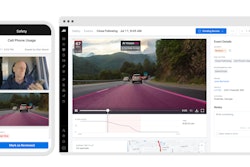Truck driving can be a fulfilling career, but it comes with its fair share of challenges.
I’ve found that one of the utmost areas of stress for drivers and fleet owners alike are driver safety ratings from the Federal Motor Carrier Safety Administration (FMCSA). An individual driver’s standing (or DOT safety rating) is critical to their reputation as a motor carrier. It also impacts the overall standing of the trucking companies they work with.
These safety and accountability scores are meant to keep everyone safe, but maintaining a satisfactory CSA (Compliance, Safety, Accountability) score can feel like another compliance matter for drivers and operators to worry about. However, when approached with the right perspective, CSA scores can become a key business asset for companies and drivers alike.
Safety on the road: what it entails, how it has changed and why it matters
The transportation of goods has been a central element of civilization for millennia. The adoption of fuel-driven automobiles as a mode of transportation in the early 1900s revolutionized the transport business.
By the mid-century, trucks had become the main mode of commercial transportation in the United States. The upside of engine-powered vehicles is their efficiency; the downside is that they introduce a whole host of new hazards for operators on the road.
It wasn’t until the late 1900s that safety standards were widely implemented within the trucking industry and the benefits were obvious. Not only does a more rigorous approach to operational safety protect human life, but it also saves companies money on fuel expenditures, insurance costs and vehicle maintenance. Today, the practicalities of road safety for an individual driver are quite involved. Driver qualifications, on-road legality, compliance in operations, equipment management, accident and claims management, and load security are all elements a driver needs to remain on top of to maintain a healthy — or at least sufficient — safety rating. In addition, safety ratings are based on a driver’s accident rate and the vehicle out of service (OOS) rate.
The accident rate is defined as DOT reportable accidents during a 5 year period, and the vehicle OOS rate is based on vehicle inspections over the previous 3 years. The industry has come far regarding standards and processes around driver safety and compliance. Unfortunately, not all companies and drivers approach safety with the amount of seriousness it deserves. Poor safety culture impacts companies, employees and everyone who shares the highway.
The safety practices of drivers impact the carriers they work for and vice versa. Obviously, good safety standings are great for drivers and the carriers they work for — a win-win.
Poor individual driving records can lead to nuclear verdicts, costing individuals their credibility and potentially costing the companies they work for millions of dollars.
Similarly, one driver’s failure to keep equipment up to date can lead to auditing and litigation, which drives up premiums on company insurance and tanks the company’s overall ranking as a reputable carrier. Consequently, the carrier may then only be able to hire less experienced drivers, perpetuating the problem and creating a company culture with which excellent drivers won’t want to be associated. Both drivers and carriers contribute to the problems associated with safety errors, and both have a role in creating the collaborative atmosphere necessary to prioritize and incentivize safe driving habits. The good news is that everyone benefits from taking road safety seriously.
The solution: all for one and one for all
There are several solutions to the trucking industry's ongoing safety and compliance issues. It all has to start with company culture around trucking safety.
If a company expects excellent safety results from its truckers, it needs to be clear on its stance regarding the importance of safety. A culture of safety refers to more than equipment and operations; it starts at the level of how a company communicates across all business practices and to all drivers. Companies need to make it abundantly clear to their fleets and independent owner-operators why taking a proactive approach to safety benefits everyone rather than imposing safety regulations in a detached, punitive, or overly profit-driven manner.
Second, companies must create an assessment for onboarding drivers. Clear guidelines can be created around various tiers of trucking expertise. Experienced drivers with spotless records can be onboarded quickly, whereas drivers who lack required experience can be onboarded at a slower pace, with safety training as part of the process. A classification system will honor both the highly qualified driver's experience and provide means for newer drivers to gain experience needed to maintain safety and compliance, further their careers and benefit the carriers they work with.
Third, interactive individual scorecards can make safety management fair and efficient. Right now, drivers receive the score of the carrier they deliver for. Even though they may be a safe driver individually, they may be impacted if their carrier’s score is poor. In an ideal scenario, trucking companies with access to permissions-only based performance data could share that information with individual drivers.
Individual safety scorecards could protect drivers from potential audits and/or carrier DOT violations that could impact their individual score. Drivers can then keep track of their own performance using their scorecards, aggregating the data shared by their carrier as well as their own operational safety and effectiveness. A strong individual safety score serves to legitimize the driver as a safe professional, which benefits their ability to secure good loads, even if the collective fleet score associated with their carrier is not as strong.
Behind every careful and thoughtful safety action is respect, understanding and appreciation for everyone the actions impact. Safe and compliant truck drivers demonstrate their consideration for themselves and everyone around them; unsafe and non-compliant drivers don’t, even if they have the best intentions. Greater collaboration between carriers and operators on implementing shared safety values, transferable data and experience-based load placements will help foster a fairer mentality between all parties, leading to fewer accidents, lower costs, stronger fleets and more successful careers.













